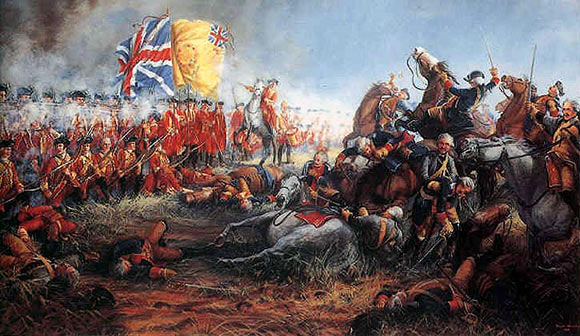









The latest in the long-standing debate over violent video games: They do cause players to become more physically aggressive.
An international study looking at more than 17,000 adolescents, ages nine to 19, from 2010 to 2017, found playing violent video games led to increased physical aggression over time.
The analysis of 24 studies from countries including the U.S., Canada, Germany and Japan found those who played violent games such as “Grand Theft Auto,” “Call of Duty” and “Manhunt” were more likely to exhibit behavior such as being sent to the principal’s office for fighting or hitting a non-family member.
“Although no single research project is definitive, our research aims to provide the most current and compelling responses to key criticisms on this topic,” said Jay Hull, lead author of the study published Monday in the Proceedings of the National Academy of Sciences.
“Based on our findings, we feel it is clear that violent video game play is associated with subsequent increases in physical aggression,” said Hull, associate dean of faculty for the social sciences at Dartmouth College in Hanover, New Hampshire, and the Dartmouth Professor of Psychological and Brain Sciences.
Video game violence has been a hot-button issue for more than a decade. Interest in research on video games’ potential for violence increased after it was learned Eric Harris and Dylan Klebold, the two teenagers who committed the Columbine High School shooting, played the first-person shooting computer game “Doom.”
But in a 2011 Supreme Court decision overturning California’s ban on the sale of violent video games to minors, the late Justice Antonin Scalia dismissed a link between the games and aggression. “These studies have been rejected by every court to consider them, and with good reason: They do not prove that violent video games cause minors to act aggressively,” he wrote in the majority opinion.
Since then, an American Psychological Association task force report in 2015 found a link between violent video games and increased aggression in players but insufficient evidence that violent games lead to criminal violence.
Earlier this year, President Donald Trump convened a video game summit a month after the February shooting that killed 17 people at Marjory Stoneman Douglas High School in Parkland, Fla. Prior to that meeting, Trump said, “I’m hearing more and more people say the level of violence on video games is really shaping young people’s thoughts.”
The Dartmouth researchers sought to reduce confusion about research findings – including disputes about the association between violent games and aggression – with a finely structured meta-analysis.
Those in the study who played violent games, whether frequently or infrequently, had an increase risk of aggressive behavior. The new research echoes Hull’s previous finding that playing violent games equates to about twice the risk of being sent to the principal’s office for fighting during an eight-month period, he said. A separate 2014 study he oversaw of violent video games in 2,000 families is one of the 24 included in the meta-analysis.
The effect is “relatively small, but statistically reliable. The effect does exist,” Hull said.
While there’s not research suggesting violent video games lead to criminal behavior, Hull’s previous research suggests players may practice riskier behaviors such as reckless driving, binge drinking, smoking and unsafe sex.
“A lot of people ask, do these games really cause these kids to behave aggressively? I would say that is one possibility,” he said. “The other possibility is that it’s a really bad sign. If your kids are playing these games, either these games are having a warping effect on right and wrong or they have a warped sense of right or wrong and that’s why they are attracted to these games. Either way you should be concerned about it.”
In the research paper, Hull and the co-authors say they hope the findings will help research move “past the question of whether violent video games increase aggressive behavior, and toward questions regarding why, when, and for whom they have such effects.”
Follow USA TODAY reporter Mike Snider on Twitter: @MikeSnider.

Expect the Worst and you will never be disappointed! Do not trust anybody until you have known them for at least a year!
Seldom will you have enough time & money at the same time!
It is bad to believe in too much but its even worst to believe in nothing at all!
I have found the things that can mess up your life & Reputation. Are your handling of Booze, Money and Women!
You will find the worst Boss you ever had was yourself!
When it comes to gear & stuff. You can buy it once or many times. So its cheaper to buy the best if you can!
There is always one more thing to do!
Anything worth having is going to be hard to get!
 Courage & Money are the only two things that never go out of fashion!
Courage & Money are the only two things that never go out of fashion!
 Nothing lasts as Friends & Good Relatives always disappear!
Nothing lasts as Friends & Good Relatives always disappear!
The only person who you can trust & rely upon is yourself.
If you want a job done well then trust but verify!
Do the best you can with what you have & then have as much fun as you can also!
As I have found over the years, Failure is the Best Teacher!
As a much better man than I, said it so much better!

So Endth the Lesson!! Grumpy Oh yeah one more! There will always be Video around when you mess up now a days!

Just looking at this, makes me hungry! Grumpy

For several Regiments of the British Army. Today is a day of Celebration and feasting. They also put roses in their covers (hats) to symbolise the Victory that their Forefathers won on this day.
Here is their story.
Minden Day is a regimental anniversary celebrated on 1 August by certain units of the British Army. It commemorates the participation of the forerunners of the regiments in the Battle of Minden during the Seven Years’ War on that date in 1759.
The celebration of the day involves the wearing of “Minden Roses” on the regimental head dress, and, in the case of the infantry regiments, the decoration of the regimental colours with garlands of roses. This recalls that the regiments wore wild roses at the battle that they had plucked from the hedgerows as they advanced to engage the enemy.
Minden Day is celebrated by:
The colours of roses varies: red is used by most of the units, but white is favoured by the Light Infantry and red and yellow by the Royal Anglians. In some cases this reflects parts of the regimental recruiting areas: the Light Infantry is associated with part of Yorkshire (represented by a white rose), the Fusiliers with part of historic Lancashire and the Princess of Wales’s area includes Hampshire (both counties having red roses as insignia).
In 1975, August 1 was adopted as Yorkshire Day, partly to reflect the presence of Yorkshire soldiers at the battle.
Minden Day is commemorated in the English folk song Lowlands of Holland, which dates to the time of the Seven Years’ War. Like most English folk songs, the song has numerous variants. One version, which is prevalent in Suffolk, home of 12th Regiment of Foot (1st Battalion Royal Anglian Regiment), contains the verse:
“My love across the ocean Wears a scarlet coat so fair, With a musket at his shoulder And roses in his hair”.
|
||||||||||||||||||||||||||||||
The Battle of Minden—or Tho(r)nhausen—was a decisive engagement during the Seven Years’ War, fought on 1 August 1759. An Anglo-German army under the overall command of Field MarshalFerdinand of Brunswick defeated a French army commanded by Marshal of France, Marquis de Contades. Two years previously, the French had launched a successful invasion of Hanover and attempted to impose an unpopular treaty of peace upon the allied nations of Britain, Hanover and Prussia. After a Prussian victory at Rossbach, and under pressure from Frederick the Great and William Pitt, King George II disavowed the treaty. In 1758, the Allies launched a counter-offensive against the French forces and drove them back across the Rhine.
After failing to defeat the French before reinforcements swelled their retreating army, the French launched a fresh offensive, capturing the fortress of Minden on 10 July. Believing Ferdinand’s forces to be over-extended, Contades abandoned his strong positions around the Weser and advanced to meet the Allied forces in battle. The decisive action of the battle came when six regiments of British and two of Hanoverian infantry, in line formation, repelled repeated French cavalry attacks; contrary to all fears that the regiments would be broken. The Allied line advanced in the wake of the failed cavalry attack, sending the French army reeling from the field, ending all French designs upon Hanover for the remainder of the year.
In Britain, the victory was considered to constitute the Annus Mirabilis of 1759.
[hide]
The western German-speaking states of Europe had been a major theatre of the Seven Years’ War since 1757, when the French had launched an invasion of Hanover. This culminated in a decisive victory for the French at the Battle of Hastenbeck and the attempted imposition of the Convention of Klosterzeven upon the defeated allies: Hanover, Prussia and Britain.[3] Prussia and Britain refused to ratify the convention and, in 1758, a counter-offensive commanded by Ferdinand saw French forces first driven back across the Rhine, and then beaten at the Battle of Krefeld. The Prussian port of Emden was also recaptured, securing supply from Britain. In fact, the British government, which had previously been opposed to any direct involvement on the continent, took the opportunity of the 1758–59 winter break in fighting to send nine thousand British troops to reinforce Ferdinand.[4] The French crown also sent a reinforcing army, under Contades, hoping this would help to secure a decisive victory, swiftly concluding the costly war, and forcing the Allies to accept the peace terms France was seeking.
In an attempt to defeat the French before their reinforcements arrived, Ferdinand decided to launch a fresh counter-offensive, and quit his winter quarters early. In April, however, Victor-François, Duke de Broglie and the French withstood Ferdinand’s attack at the Battle of Bergen, and de Broglie was promoted to Marshal of France. Ferdinand was forced to retreat northwards in the face of the now reinforced French army. Contades, senior of the two French marshals, resumed the advance, occupying a number of towns and cities including the strategic fortress at Minden, which fell to the French on 10 July.[5] Ferdinand was criticised for his failure to check the French offensive. His celebrated brother-in-law, Frederick the Great, is reported as having suggested that, since his loss at Bergen, Ferdinand had come to believe the French to be invincible.[6] Irrespective of any presumed crisis of confidence, however, Ferdinand did ultimately decide to confront the French, near Minden.
Contades had taken up a strong defensive position along the Weser around Minden, where he had paused to regroup before he continued his advance. He initially resisted the opportunity to abandon this strong position to attack Ferdinand. Ferdinand instead formulated a plan that involved splitting his force into several groups to threaten Contades’ lines of supply. Perceiving Ferdinand’s forces to be over-extended, Contades thought he saw a chance for the desired decisive victory. He ordered his men to abandon their defensive encampments and advance into positions on the plain west of Minden during the night of 31 July and early morning of 1 August.[7]
| This section does not cite any sources. (July 2011) (Learn how and when to remove this template message) |

The river Weser
In 1759, the fortified city of Minden, now the Innenstadt (inner city) of modern Minden, was situated at the confluence of the Weser, which flows from south to north, and the Bastau, a marshy tributary rivulette. The Bastau drains into the Weser from west to east, roughly parallel with, and south of, the western arm of modern Germany’s Midland Canal, where it crosses the Weser at Minden, north of the Innenstadt via the second largest water bridge in Europe). The Battle of Minden took place on the plain immediately in front of the city and its fortifications, to its northwest, with the Weser and Bastau lying behind the city to its east and south respectively.
On the 31st, the French troops under Contades’ direct command had their positions west of the Weser and south of the Bastau, crossing to the north over five pontoons during the night and early morning of the 1st. The French under the junior marshal, de Broglie, were stationed astride the Weser. Some were occupying Minden on the 31st, while the remainder, stationed east of the Weser, crossed over to join them during the night.
In an exception to the norm for the era, Contades placed his artillery in the centre protected only by the cavalry, with his infantry on either flank. The battle began on the French right flank, where Marshal de Broglie, who commanded the reserve, began an artillery duel against the allied left.
The decisive action of the battle took place in the centre, famously due to a misunderstanding of orders. Friedrich von Spörcken‘s division, composed of the infantry of the British contingent of the allied army (two brigades under Earl Waldegrave and William Kingsley) and supported by the Hanoverian Guards, actually advanced to attack the French cavalry. It is reported that they had been ordered “to advance [up-]on the beating of drums” (i.e., advance when the signal drums begin to beat,) misunderstanding this as “to advance to the beating of drums” (i.e., advance immediately while beating drums.) Since the French cavalry was still in its ranks and the famous ‘hollow square‘ had not yet been developed, it was assumed by all that the six leading British regiments were doomed. Despite being under constant artillery fire, the six regiments (soon supported by two Hanoverian battalions), by maintaining fierce discipline and closed ranks, drove off repeated cavalry charges with musket fire and inflicted serious casualties on the French. Contades reportedly said bitterly, “I have seen what I never thought to be possible—a single line of infantry break through three lines of cavalry, ranked in order of battle, and tumble them to ruin!”[8]
Supported by the well-served British and Hanoverian artillery, the entire allied line eventually advanced against the French army and sent it fleeing from the field. The only French troops capable of mounting any significant resistance were those of de Broglie, who formed a fighting rear guard.
Prince Ferdinand’s army suffered nearly 2,800 men killed and wounded; the French lost about 7,000 men.[2] In the wake of the battle the French retreated southwards to Kassel. The defeat ended the French threat to Hanover for the remainder of that year.
Ferdinand’s cavalry commander, Lieutenant General Lord George Sackville, was accused of ignoring repeated orders to bring up his troopers and charge the enemy until it was too late to make any difference. In order to clear his name he requested a court martial, but the evidence against him was substantial and the court martial declared him “…unfit to serve His Majesty in any capacity whatsoever.” [9] Sackville would later reappear as Lord George Germain and bear a major portion of the blame for the outcome of the American Revolution while Secretary of State for the Colonies.
In Britain the result at Minden was widely celebrated and was seen as part of Britain’s Annus Mirabilis of 1759 also known as the “Year of Victories”, although there was some criticism of Ferdinand for not following up his victory more aggressively. When George II of Great Britain learned of the victory, he awarded Ferdinand £20,000 and the Order of the Garter.[10] Minden further boosted British support for the war on the continent, and the following year a “glorious reinforcement” was sent, swelling the size of the British contingent in Ferdinand’s army.[11]
In France the reaction to the result was severe. The Duc de Choiseul, the French Chief Minister, wrote “I blush when I speak of our army. I simply cannot get it into my head, much less into my heart, that a pack of Hanoverians could defeat the army of the King”. To discover how the defeat had occurred and to establish the general condition of the army, Marshal d’Estrées was sent on a tour of inspection. Marshal de Contades was subsequently relieved of his command and replaced by the Duc de Broglie.[12]
Michel Louis Christophe Roch Gilbert Paulette du Motier, Marquis de La Fayette and colonel aux Grenadiers de France, was killed when he was hit by a cannonball in this battle.[13] La Fayette’s son, Gilbert du Motier, marquis de Lafayette, was not even two years old at that time. Jean Thurel, the 59-year-old French fusilier, was severely wounded, receiving seven sword slashes, six of them to the head.[14]
| This section does not cite any sources. (July 2011) (Learn how and when to remove this template message) |
The British regiments which fought at Minden (with the successor British army unit which still uphold their traditions) were:
The descendents of these units are still known as “the Minden Regiments.”
When the British infantry and artillery were first advancing to battle they passed through some German gardens and the soldiers picked roses and stuck them in their coats. In memory of this, each of the Minden regiments marks 1 August as Minden Day. On that day the men of all ranks wear roses in their caps. Royal Anglians, The Royal Regiment of Fusiliers and the PWRR wear red and yellow roses; the SCOTS wear red; RIFLES wear Yorkshire white roses. From this tradition, and to mark the heroism of the Yorkshiremen who fought, 1 August has been adopted as Yorkshire Day. The R WELSH do not wear roses on Minden Day as the Minden Rose was incorporated into the roundel of the cap badge of the Royal Welch Fusiliers and so is worn every day of the year. Retired members of the Regiment do sport roses in the lapels on Minden Day. Artillery regiments with Minden associations (see below) wear red roses.
This British victory was also recalled in the British Army’s Queen’s Division which maintained the “Minden Band” until its 2006 amalgamation with the “Normandy Band” to form the Band of the Queen’s Division.
Two Batteries from the Royal Regiment of Artillery carry the Minden battle honour. Soldiers from both 12 (Minden) Batteryand 32 (Minden) Battery traditionally wear a red rose in their headdress on 1 August every year, both batteries celebrate Minden Day every year. A proud tradition exists: ‘Once a Minden Man, always a Minden Man.’
Every year from 1967 to 2015, six red roses have been anonymously delivered to the British consulate in Chicago on 1 August. Until they were closed, roses were also delivered to consulates in Kansas City, Minneapolis and St. Louis, starting as early as 1958 in Kansas City. A note that comes with the roses lists the six regiments and says, “They advanced through rose gardens to the battleground and decorated their tricorne hats and grenadier caps with the emblem of England. These regiments celebrate Minden Day still, and all wear roses in their caps on this anniversary in memory of their ancestors.” The Embassy has asked for the name of the sender (on numerous occasions) so that they may thank the individual in person, but the identity of the donor remains a mystery.

The legal origin of the Chaplains is found in a resolution of the Continental Congress, adopted 29 July 1775, which made provision for the pay of chaplains. The Office of the Chief of Chaplains was created by the National Defense Act of 1920.
Now I have always liked the Padres. Most of them take their duties seriously & do them well. Some even turned into some real heros like the story below.

The Four Chaplains, also sometimes referred to as the “Immortal Chaplains” or the “Dorchester Chaplains”, were four United States Army chaplains who gave their lives to save other civilian and military personnel as the troop ship SS Dorchester sank on February 3, 1943, during World War II. They helped other soldiers board lifeboats and gave up their own life jackets when the supply ran out.[1] The chaplains joined arms, said prayers, and sang hymns as they went down with the ship.
The Men
The relatively new chaplains all held the rank of first lieutenant. They included Methodist minister the Reverend George L. Fox, Reform Rabbi Alexander D. Goode (Ph.D.), Roman Catholic priest Father John P. Washington, and Reformed Church in America minister the Reverend Clark V. Poling. Their backgrounds, personalities, and denominations were different, although Goode, Poling and Washington had all served as leaders in the Boy Scouts of America.[2] They met at the Army Chaplains School at Harvard University, where they prepared for assignments in the European theater, sailing on board Dorchester to report to their new assignments.
George L. Fox was born March 15, 1900, in Lewistown, Pennsylvania, the eldest of eight children. When he was 17, he left school and lied about his age in order to join the Army to serve in World War I. He joined the ambulance corps in 1917, assigned to Camp Newton D. Baker in Texas. On December 3, 1917, George embarked from Camp Merritt, New Jersey, and boarded the USS Huron en route to France. As a medical corps assistant, he was highly decorated for bravery and was awarded the Silver Star, Purple Heart and the French Croix de Guerre.
Upon his discharge, he returned home to Altoona, where he completed high school. He entered Moody Bible Institute in Illinois in 1923. He and Isadora G. Hurlbut of Vermont were married in 1923, when he began his religious career as an itinerant preacher in the Methodist faith. He later graduated from Illinois Wesleyan University in Bloomington, served as a student pupil in Rye, New Hampshire, and then studied at the Boston University School of Theology, where he was ordained a Methodist minister on June 10, 1934. He served parishes in Thetford, Union Village, and Gilman, Vermont, and was appointed state chaplain and historian for the American Legion in Vermont.
In 1942, Fox volunteered to serve as an Army chaplain, accepting his appointment July 24, 1942. He began active duty on August 8, 1942, the same day his son Wyatt enlisted in the Marine Corps. After Army Chaplains school at Harvard, he reported to the 411th Coast Artillery Battalion at Camp Davis. He was then united with Chaplains Goode, Poling and Washington at Camp Myles Standish in Taunton, Massachusetts, where they prepared to depart for Europe on board the Dorchester.[3]
Reform-Rabbi Alexander D. Goode (Ph.D) was born in Brooklyn, New York on May 10, 1911, the son of Rabbi Hyman Goodekowitz. He was raised in Washington, D.C., attending Eastern High School, eventually deciding to follow his father’s footsteps by studying for the rabbinate himself, at Hebrew Union College (HUC), where he graduated with a B.H. degree in 1937. He later received his Ph.D. from Johns Hopkins University in 1940. While studying for the rabbinate at HUC, he worked at the Washington Hebrew Congregation during summer breaks.[4]
He originally applied to become a Navy chaplain in January 1941, but was not accepted. After the attack on Pearl Harbor in 1941, he applied to the Army, receiving his appointment as a chaplain on July 21, 1942. Chaplain Goode went on active duty on August 9, 1942, and was selected for the Chaplains School at Harvard. Chaplain Goode was then assigned to the 333rd Airbase Squadron in Goldsboro, North Carolina. In October 1942, he was transferred to Camp Myles Standish in Taunton, Massachusetts, and reunited with chaplains Fox, Poling and Washington, who had been among his classmates at Harvard.[5]
Clark V. Poling was born August 7, 1910, in Columbus, Ohio, the son of evangelical minister Daniel A. Poling, who was rebaptized in 1936 as a Baptist minister. Clark Poling studied at Yale University’s Divinity School in New Haven, Connecticut and graduated with his B.D. degree in 1936. He was ordained in the Reformed Church in America, and served first in the First Church of Christ, New London, Connecticut, and then as Pastor of the First Reformed Church, in Schenectady, New York. He married Betty Jung.
With the outbreak of World War II, Poling decided to enter the Army, wanting to face the same danger as others. His father, who had served as a World War I chaplain, told him chaplains risk and give their lives, too—and with that knowledge, he applied to serve as an Army chaplain, accepting an appointment on June 10, 1942 as a chaplain with the 131st Quartermaster Truck Regiment, reporting to Camp Shelby, Hattiesburg, Mississippi, on June 25. Later he reported to Army Chaplains School at Harvard, where he would meet Chaplains Fox, Goode, and Washington.[6]
John P. Washington was born in Newark, New Jersey on July 18, 1908. He studied at Seton Hall, in South Orange, New Jersey, to complete his high school and college courses in preparation for the Catholic priesthood. He graduated in 1931 with an A.B. Degree, entering Immaculate Conception Seminary in Darlington, New Jersey, where he received his minor orders on May 26, 1933. He served as a subdeacon at all the solemn masses and later became a deacon on December 25, 1934. He was elected prefect of his class and was ordained a priest on June 15, 1935.
Father Washington’s first parish was at St. Genevieve’s, in Elizabeth, New Jersey. He later served at St. Venantius for a year. In 1938, he was assigned to St. Stephen’s in Kearny, New Jersey. Shortly after the Pearl Harbor attack of December 7, 1941, he received his appointment as a chaplain in the United States Army, reporting for active duty on May 9, 1942. He was named Chief of the Chaplains Reserve Pool, in Ft. Benjamin Harrison, Indiana, and in June 1942, he was assigned to the 76th Infantry Division in Ft. George Meade, Maryland. In November 1942, he reported to Camp Myles Standish in Taunton, Massachusetts, and met Chaplains Fox, Goode and Poling at Chaplains School at Harvard.[7]
The Dorchester had been a 5,649 ton civilian liner, 368 feet long with a 52-foot beam and a single funnel, originally built in 1926 by Newport News Shipbuilding and Dry Dock Company, for the Merchants and Miners Line, operating ships from Baltimore to Florida, carrying both freight and passengers.[8] It was the third of four liners being built for the Line.
The ship was converted for military service in World War II as a War Shipping Administration troop transport operated by Atlantic, Gulf & West Indies Steamship Lines (Agwilines) allocated to United States Army requirements.[9][10] The conversion was done in New York by the Atlantic, Gulf, and West Indies (AGWI) SS Company, and included additional lifeboats and liferafts; guns (a 3-inch 50 caliber gun forward, and a 4-inch 50 caliber gun aft, in addition to four 20mm guns); and changes to the large windows in the pilot house so that they would be reduced to slits to afford more protection.[11]
Designed for 314 civilian passengers and 90 crew, she was able to carry slightly more than 900 military passengers and crew.
Dorchester left New York on January 23, 1943, en route to Greenland, carrying the four chaplains and approximately 900 others, as part of a convoy of three ships (SG-19 convoy). Most of the military personnel were not told the ship’s ultimate destination. The convoy was escorted by Coast Guard Cutters Tampa, Escanaba, and Comanche.[12]

Coast Guard Cutter USCGC Escanaba rescues Dorchester survivors.
The ship’s captain, Hans J. Danielsen, had been alerted that Coast Guard sonar had detected a submarine. Because German U-boats were monitoring sea lanes and had attacked and sunk ships earlier during the war, Captain Danielsen had the ship’s crew on a state of high alert even before he received that information, ordering the men to sleep in their clothing and keep their life jackets on. “Many soldiers sleeping deep in the ship’s hold disregarded the order because of the engine’s heat. Others ignored it because the life jackets were uncomfortable.”[13]
During the early morning hours of February 3, 1943, at 12:55 a.m., the vessel was torpedoed by the German submarine U-223 off Newfoundland in the North Atlantic.[13]
The torpedo knocked out the Dorchester‘s electrical system, leaving the ship dark. Panic set in among the men on board, many of them trapped below decks. The chaplains sought to calm the men and organize an orderly evacuation of the ship, and helped guide wounded men to safety. As life jackets were passed out to the men, the supply ran out before each man had one. The chaplains removed their own life jackets and gave them to others. They helped as many men as they could into lifeboats, and then linked arms and, saying prayers and singing hymns, went down with the ship.[13]
As I swam away from the ship, I looked back. The flares had lighted everything. The bow came up high and she slid under. The last thing I saw, the Four Chaplains were up there praying for the safety of the men. They had done everything they could. I did not see them again. They themselves did not have a chance without their life jackets.
— Grady Clark, survivor[14]
According to some reports, survivors could hear different languages mixed in the prayers of the chaplains, including Jewish prayers in Hebrew and Catholic prayers in Latin. Only 230 of the 904 men aboard the ship were rescued. Life jackets offered little protection from hypothermia, which killed most men in the water. The water temperature was 34 °F (1 °C) and the air temperature was 36 °F (2 °C). By the time additional rescue ships arrived, “hundreds of dead bodies were seen floating on the water, kept up by their life jackets.”
On December 19, 1944, all four chaplains were posthumously awarded the Purple Heart and the Distinguished Service Cross.[35]
Additionally, members of Congress later authorized a special medal, the Four Chaplains’ Medal, approved by a unanimous act of Congress on July 14, 1960, through public law 86-656 of the 86th Congress.[36][37] The medals were presented posthumously to the next of kin of each of the Four Chaplains by Secretary of the Army Wilber M. Brucker at Fort Myer, Virginia, on January 18, 1961.[38]


No not that kind, This kind!

![]()
| BAKED STUFFED RACCOON WITH APPLES | |
|
1 med. raccoon
4 lg. onions 4 strips salted pork 2 c. beef stock STUFFING:
5 lg. tart apples
2 tbsp. butter 1 tsp. cinnamon 1 c. dry bread crumbs 1 tsp. salt 1/2 tsp. pepper Skin and clean the raccoon. Wash well and remove most of the fat. Place in a large soup kettle, cover with water and bring to a boil. Lower heat and simmer for 30 minutes.Peel, core and dice the apples into a mixing bowl. Melt the butter in a small saucepan and add the cinnamon, bread crumbs, salt and pepper; mix well. Remove the raccoon from the cooking juices and cool. Stuff the raccoon and sew up the cavity. Place the raccoon, breast down on the rack of a roast pan, with the legs folded under the body and fasten with kitchen string. Drape the salt pork over the back of the raccoon and fasten with toothpicks. Place the onions beside the raccoon on the rack.
Bake at 400 degrees for 10 minutes to brown the meat. Reduce temperature to 325 degrees and add the 2 cups of beef stock. Cook for 1 hour, basting as often as possible. Transfer to a heated platter surrounded by the whole onions. |
|
| Share: | + Add review or comment |
| « PREVIOUS RECIPE | NEXT RECIPE » |
|
||||||
|
|
